Mosel – Germany
-
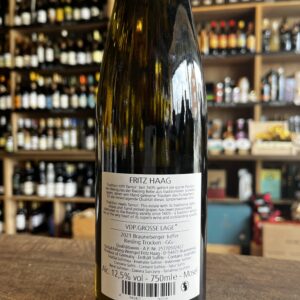
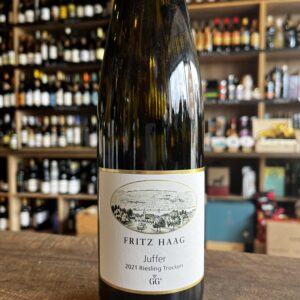 The historic Fritz Haag wine estate is located in the heart of the central Mosel River Valley. The earliest documentation of the estate dates back to 1605. At that time, the village in which it is situated was known as “Dusemond.” In 1925, this village was renamed “Brauneberg” (“brown mountain,” a reference to the color of the slate soil in this area of the Mosel) in an endeavor to further promote the reputation of its world-renowned vineyards “Brauneberger Juffer” and “Brauneberger Juffer Sonnenuhr.” Like all the top Mosel producers, Fritz Haag produces a range of wines including some very rich, late harvest dessert wines. These wines put the region on the map for luxury wine in the 17 and 1800s, making some Mosel Riesling more pricey and coveted than first growth Bordeaux. But in truth the wines that the locals drank, especially in the summer, were generally off dry to completely bone dry. Fritz Haag's vineyards sit along the slopes of the Brauneberger hill and the vineyards of Juffer and Juffer Sonnenuhr. Brauneberger faces almost entirely south which makes it a bit easier to get fully ripe Riesling in the classically cold, wet Mosel. That has changed a bit recently of course, but this is still a prized site for wines that perfectly balance finesse and power, complexity and airy drinkability. This specific wine is a VDP GG or Grosse Lage which is equivalent to a Grand Cru.
The historic Fritz Haag wine estate is located in the heart of the central Mosel River Valley. The earliest documentation of the estate dates back to 1605. At that time, the village in which it is situated was known as “Dusemond.” In 1925, this village was renamed “Brauneberg” (“brown mountain,” a reference to the color of the slate soil in this area of the Mosel) in an endeavor to further promote the reputation of its world-renowned vineyards “Brauneberger Juffer” and “Brauneberger Juffer Sonnenuhr.” Like all the top Mosel producers, Fritz Haag produces a range of wines including some very rich, late harvest dessert wines. These wines put the region on the map for luxury wine in the 17 and 1800s, making some Mosel Riesling more pricey and coveted than first growth Bordeaux. But in truth the wines that the locals drank, especially in the summer, were generally off dry to completely bone dry. Fritz Haag's vineyards sit along the slopes of the Brauneberger hill and the vineyards of Juffer and Juffer Sonnenuhr. Brauneberger faces almost entirely south which makes it a bit easier to get fully ripe Riesling in the classically cold, wet Mosel. That has changed a bit recently of course, but this is still a prized site for wines that perfectly balance finesse and power, complexity and airy drinkability. This specific wine is a VDP GG or Grosse Lage which is equivalent to a Grand Cru. -
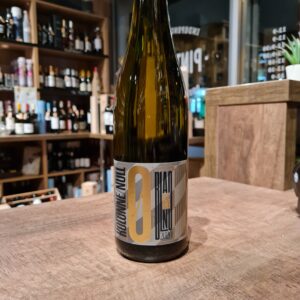 With admirable precision and innovative ideas, the family-run winery Pauly, now in its 3rd generation, succeeds in producing stylish wines with an outstanding character of their own. The winery is not only known for its famous steep slope on the Niederberg-Helden on the Mosel River, but also for the unique slate minerality that gives the wines an elegant, fresh style. The alcohol-free Riesling from Kolonne Null is perfect for all wine enthusiasts who like as little residual sweetness in their wine as possible. Best enjoyed very well chilled at 5 - 7°C. It is perfect as an accompaniment to stir-fried vegetables with fish, omelette with salmon and fennel or vegetable salad with beetroot.
With admirable precision and innovative ideas, the family-run winery Pauly, now in its 3rd generation, succeeds in producing stylish wines with an outstanding character of their own. The winery is not only known for its famous steep slope on the Niederberg-Helden on the Mosel River, but also for the unique slate minerality that gives the wines an elegant, fresh style. The alcohol-free Riesling from Kolonne Null is perfect for all wine enthusiasts who like as little residual sweetness in their wine as possible. Best enjoyed very well chilled at 5 - 7°C. It is perfect as an accompaniment to stir-fried vegetables with fish, omelette with salmon and fennel or vegetable salad with beetroot. -
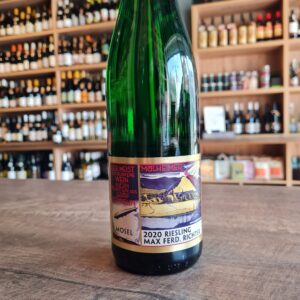 Max Ferdinand Richter winery produces this classic off-dry Mosel Riesling from the Mulheimer Sonnenlay vineyard. The bottle features a beautiful Art Deco label depicting the Zeppelin airships upon which this Riesling was served in the 1920's and 30's. "The Mülheimer Sonnenlay is the largest single Richter vineyard and the source of the world-renowned “Zeppelin” Riesling. The vineyard sits on the west-southwestern side of a slate stone hill south of Mülheim, a dry riverbed formed during the last ice age 250,000 years ago. The name of the vineyard– Sonne (sunshine) and lay (slate stone) –perfectly describes the characteristics of the site. This often extremely steep vineyard has a loose slate stone soil structure that is enriched by pebbles, loam and sand deposited by the ancient river. This kind of soil creates wines that combine typical slate stone mineral character with animated and elegant fruitiness." When possible, they utilize natural yeasts and eschew chemical fining agents. Max Ferdinand Richter’s 48 steep acres are spread out in the Middle Mosel Valley between Erden and Brauneberg. Plantings consist of 95% Riesling and 5% Pinot Blanc grapes. The average age of Richter vines is 40 years. "Wines from the Mülheimer Sonnenlay were served on the luxurious Zeppelin airships -including the Hindenburg - in the 1920s and 30s. Local growers, proud of this distinction, commissioned Bauhaus artist Hans Schlösser to design a label for the wine incorporating the iconic Zeppelin airship. The label is still featured today."
Max Ferdinand Richter winery produces this classic off-dry Mosel Riesling from the Mulheimer Sonnenlay vineyard. The bottle features a beautiful Art Deco label depicting the Zeppelin airships upon which this Riesling was served in the 1920's and 30's. "The Mülheimer Sonnenlay is the largest single Richter vineyard and the source of the world-renowned “Zeppelin” Riesling. The vineyard sits on the west-southwestern side of a slate stone hill south of Mülheim, a dry riverbed formed during the last ice age 250,000 years ago. The name of the vineyard– Sonne (sunshine) and lay (slate stone) –perfectly describes the characteristics of the site. This often extremely steep vineyard has a loose slate stone soil structure that is enriched by pebbles, loam and sand deposited by the ancient river. This kind of soil creates wines that combine typical slate stone mineral character with animated and elegant fruitiness." When possible, they utilize natural yeasts and eschew chemical fining agents. Max Ferdinand Richter’s 48 steep acres are spread out in the Middle Mosel Valley between Erden and Brauneberg. Plantings consist of 95% Riesling and 5% Pinot Blanc grapes. The average age of Richter vines is 40 years. "Wines from the Mülheimer Sonnenlay were served on the luxurious Zeppelin airships -including the Hindenburg - in the 1920s and 30s. Local growers, proud of this distinction, commissioned Bauhaus artist Hans Schlösser to design a label for the wine incorporating the iconic Zeppelin airship. The label is still featured today." -
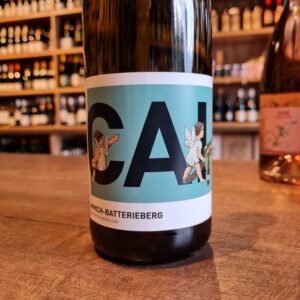 Immich-Batterieberg is one of the oldest wineries in the Mosel; originally founded by a Carolingian monastery, it can be traced back to the year 911. In 1495, the Immich family purchased the property, producing traditional dry and off-dry wines under their name for almost 500 years. The historical estate was then acquired in 2009 by Gernot Kollmann, one of Germany's finest up and comers. He is no stranger to the Mosel, having worked on many prestigious wineries in the region – Dr. Loosen, Weingut Van Volxem and Knebel. Since taking over, he has chosen to retain the long-standing tradition of the winery. The wines are once again produced in a dry or off-dry style, with sugar levels depending on each site, each vintage.80-percent of the vines are un-grafted and over 60 years old, and everything is worked organically. Intervention during vinification is also forbidden. A crisp, crunchy, keenly balanced, TOTALLY DRY trocken style Riesling.
Immich-Batterieberg is one of the oldest wineries in the Mosel; originally founded by a Carolingian monastery, it can be traced back to the year 911. In 1495, the Immich family purchased the property, producing traditional dry and off-dry wines under their name for almost 500 years. The historical estate was then acquired in 2009 by Gernot Kollmann, one of Germany's finest up and comers. He is no stranger to the Mosel, having worked on many prestigious wineries in the region – Dr. Loosen, Weingut Van Volxem and Knebel. Since taking over, he has chosen to retain the long-standing tradition of the winery. The wines are once again produced in a dry or off-dry style, with sugar levels depending on each site, each vintage.80-percent of the vines are un-grafted and over 60 years old, and everything is worked organically. Intervention during vinification is also forbidden. A crisp, crunchy, keenly balanced, TOTALLY DRY trocken style Riesling.

